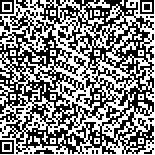| 摘要: |
| 应用半静态双箱模型室内模拟了紫贻贝对4种重金属(As、Hg、Cd、Pb)的生物富集实验,通过非线性拟合得到了紫贻贝富集重金属的吸收速率常数k1、排出速率常数k2、生物富集因子BCF、生物学半衰期B1/2等动力学参数。实验海水盐度为32、温度分别为(12.34±2.28)℃和(6.63±3.12)℃、溶氧量>6.5mg/L。得到的Hg、Cd、Pb的动力学参数k1为8.712—301.5;k2为0.009425—0.03064;BCF为783.4—11754;B1/2为22.62—73.54。比较结果得出:吸收速率常数k1及生物富集因子BCF均随着外部水体浓度的增加而减小,在平衡状态下生物体内金属含量Cmax随着外部水体浓度的增加而增加,且基本呈正相关,说明紫贻贝是比较理想的重金属Hg、Cd、Pb污染的指示生物。紫贻贝排出Cd的生物学半衰期要长于金属Hg、Pb、As。 |
| 关键词: 动力学特征,生物富集,重金属,紫贻贝 |
| DOI: |
| 分类号: |
| 基金项目:国家农业科技跨越计划资助项目,2001-20号;国家自然科学基金资助项目,30271021号 |
|
| KINETIC FEATURES OF FOUR HEAVY METALS BIOACCUMULATION OF MUSSEL MYTILUS EDULIS |
|
ZHANG Shao-Na1,2, SUN Yao1, SONG Yun-Li1, YU Zhi-Gang2
|
|
1.Yellow Sea Fisheries Research Institute,Chinese Academy of Fishery Sciences;2.College of Chemistry and Chemical Engineering,Ocean University of China
|
| Abstract: |
| Heavy metal pollution in benthic filter-feeding bivalves Mytilus edulis, due to their commercial importance, wide distribution, low activity and high heavy metal accumulation ability have been used as a marine pollution surveillance organism.
Currently, biological reaction of commercial marine mollusks to heavy metals, especially the study of kinetic process of bioaccumulation, is limited to the study of metal content and bioaccumulation rate under single conditions. To date no satisfactory kinetic model has been proposed an absence that hindersunderstanding of kinetic features and forecast ability.
The two-compartment kinetic model is a newly developed mathematic model. In this study, accumulation and elimination of four heavy metals (As, Hg, Cd and Pb) in M.edulis were investigated using the two-compartment kinetic model. A semi-static system was maintained throughout a 30-day exposure period under heavy metals concentrations of (12.34±2.28)°C. During the uptake phase, water was changed on alternate days, sufficient to maintain relatively constant concentrations of heavy metals, and the test organism was fed with Chlorella (4×106 cells/ml) twice daily. Three animals were sampled periodically and frozen immediately for later analysis. The remaining M.edulis were then transferred to clean seawater for the elimination phase of 35 days, during which the flow-through method was adopted and the natural seawater temperature changed to (6.63±3.12)°C.
According to the two-compartment kinetic model, two equations were used for the accumulation and elimination phase. By non-linear fitting, some kinetic parameters were obtained, such as uptake rate constant(k1), extraction rate constant(k2), bioaccumulation factor(BCF) and the biological half-life(B1/2). Results showed that (1) the k1 decreased with increasing metal concentration in the outside water; (2) BCF decreased with increasing metal concentration in the outside water; (3) the bioaccumulation ability order of M.edulis to the four heavy metals was Hg>>Pb>Cd>>As; (4) maximal content in the organism(CAmax ) increased and was basically directly proportional with increasing metal concentration in the outside water, showing that M.edulis was the best indicator of the three heavy metals: Hg, Pb, As; (5)biological half-life of M.edulis to Cd was longer than that to Hg, Pb, As.
The kinetic parameters of bioconcentration of M.edulis on Hg, Cd, Pb were obtained: k1 8.712—301.5; k2 0.009425--0.03064; BCF 783.4一11754; B1/2 22.62一73.54. Compared with the kinetic parameters obtained through the semi-static two-compartment, the values were found to have some differences, prompting further study. The static method, however, is simpler and more effective, shortening the experiment duration, and economizing the experiment fee. Moreover it can calculate the uptake rate of the shell without the need to determine shell content by chemical methods. |
| Key words: Kinetic feature, Bioaccumulation, Heavy metal, Mussel Mytilus edulis |
